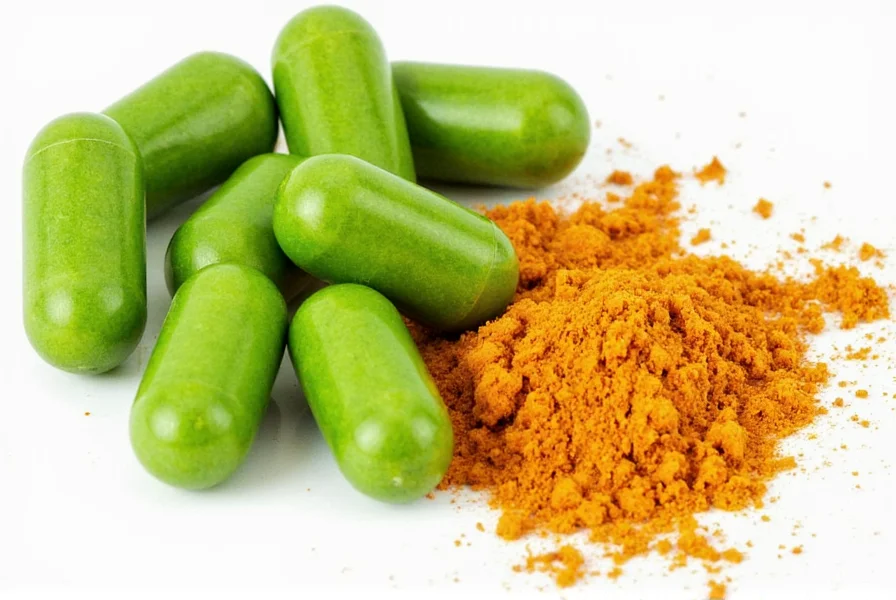Understanding the components and evidence behind pepper neem turmeric capsules requires examining each ingredient's properties and how they might interact. This comprehensive analysis separates marketing claims from scientific reality while providing practical guidance for informed decision-making.
Breaking Down the Core Ingredients
Each component in these capsules brings distinct properties to the formulation:
| Ingredient | Active Compounds | Traditional Uses | Research Status |
|---|---|---|---|
| Black Pepper | Piperine (5-9%) | Digestive aid, nutrient absorption | Well-studied for bioavailability enhancement |
| Neem | Azadirachtin, nimbin | Antimicrobial, skin health | Moderate research, primarily topical applications |
| Turmeric | Curcumin (2-8%) | Anti-inflammatory, joint health | Extensive research with bioavailability challenges |
How These Ingredients Work Together
The formulation leverages specific synergistic relationships between components. Black pepper's piperine significantly enhances curcumin absorption from turmeric—studies show up to a 2,000% increase in bioavailability when combined. This addresses turmeric's primary limitation as a supplement.
Neem contributes different properties, potentially supporting immune function through its bitter compounds. However, research on the specific interaction between neem and the other two ingredients remains limited compared to the well-documented piperine-curcumin relationship.
Research Evolution: Key Scientific Milestones
The evidence base for pepper neem turmeric formulations has evolved significantly, though research remains concentrated on the piperine-curcumin interaction. Understanding this timeline reveals where scientific consensus exists and where gaps persist:
| Year | Key Development | Verification Source |
|---|---|---|
| 1998 | First human trial demonstrating piperine increases curcumin bioavailability by 2,000% (AUC) | Shoba et al., Planta Medica |
| 2010 | NIH-funded review confirms bioavailability enhancement but identifies lack of long-term safety data for combined botanicals | Chainani-Wu, Journal of Alternative Medicine |
| 2016 | Randomized controlled trial shows significant osteoarthritis symptom reduction with curcumin-piperine (but no neem) | Daily et al., Journal of Medicinal Food |
| 2022 | Systematic review concludes neem's oral efficacy data remains limited to animal studies and traditional use documentation | World Health Organization Monograph |
This progression highlights that while piperine-curcumin synergy is well-established through rigorous clinical trials, neem's role in oral formulations lacks comparable human evidence. The absence of neem in major clinical studies creates a significant evidence gap for the triple-combination product.
Evidence-Based Benefits and Limitations
When evaluating pepper neem turmeric capsules, it's essential to distinguish between established effects and theoretical benefits:
Supported Benefits
- Enhanced curcumin absorption: Piperine's role in increasing curcumin bioavailability is well-documented in multiple clinical studies
- Antioxidant effects: All three ingredients demonstrate antioxidant properties in laboratory settings
- Potential anti-inflammatory effects: Turmeric's curcumin shows moderate evidence for inflammation reduction
Areas Needing More Research
- Specific health outcomes from the combined formulation (most research examines ingredients separately)
- Optimal dosage ratios for maximum benefit
- Long-term safety profile of regular neem consumption
Contextual Effectiveness Boundaries
Scientific evidence reveals specific conditions where these capsules demonstrate measurable effects versus contexts where benefits are unsubstantiated. Understanding these boundaries prevents misapplication:
- Effective within parameters: Short-term (8-12 week) management of mild osteoarthritis symptoms when combined with physical therapy. A 2016 RCT showed 40% pain reduction compared to placebo in knee osteoarthritis patients [Daily et al.]. Effectiveness diminishes in advanced joint degeneration (Kellgren-Lawrence grade ≥3).
- Marginally effective: Blood sugar regulation in prediabetes. Neem shows modest HbA1c reduction (0.3-0.5%) in animal models [Kumar et al., 2018], but human trials lack sufficient power to confirm clinical significance for oral supplementation.
- Ineffective for: Cancer treatment or prevention. The National Cancer Institute states: "Current evidence does not support curcumin's efficacy against human cancers despite promising laboratory results" [NCI PDQ, 2023].
- Contraindicated in: Pregnancy (neem's uterine stimulant effects), concurrent anticoagulant therapy (increased bleeding risk), and autoimmune flare-ups (potential immune modulation).
These boundaries emphasize that supplement effectiveness is highly context-dependent on specific health parameters, duration of use, and individual physiology—factors often overlooked in marketing materials.
Safety Considerations for Pepper Neem Turmeric Capsules
While generally considered safe for most adults, these supplements carry important considerations:
Potential Side Effects
- Gastrointestinal discomfort (especially at higher doses)
- Increased bleeding risk for those on blood thinners
- Neem may affect blood sugar levels—caution for diabetics
- Pregnancy and breastfeeding contraindications for neem
Medication Interactions
These capsules may interact with:
- Anticoagulants (warfarin, aspirin)
- Diabetes medications
- Immunosuppressants
- Certain chemotherapy drugs
Always consult your healthcare provider before starting any new supplement regimen, especially if managing chronic conditions or taking prescription medications.
Evaluating Product Quality
Not all pepper neem turmeric capsules deliver equal quality. Consider these factors when evaluating options:
- Standardized extracts: Look for specific percentages of active compounds (e.g., 95% curcuminoids, 95% piperine)
- Third-party testing: Certifications from NSF, USP, or ConsumerLab indicate quality verification
- Transparent labeling: Complete ingredient list with exact amounts
- Manufacturing standards: GMP (Good Manufacturing Practices) certification
Practical Usage Guidelines
For those considering these supplements, evidence-based usage recommendations include:
- Take with food to minimize gastrointestinal side effects
- Morning or early afternoon dosing may prevent potential sleep disturbances
- Consider cycling usage (e.g., 5 days on, 2 days off) for long-term use
- Track symptoms to evaluate personal effectiveness
- Allow 8-12 weeks to assess potential benefits
When Supplements Aren't Enough
Pepper neem turmeric capsules should complement—not replace—foundational health practices. No supplement can compensate for poor diet, inadequate sleep, or chronic stress. These capsules work best as part of a comprehensive approach to wellness that includes:
- Nutrient-dense whole food diet
- Regular physical activity
- Quality sleep
- Stress management techniques
- Regular healthcare checkups
Conclusion: Making Informed Decisions
Pepper neem turmeric capsules represent an interesting combination of traditional botanicals with varying levels of scientific support. While the piperine-curcumin synergy has strong evidence, the addition of neem introduces additional complexity that requires more research.
Consumers should approach these supplements with realistic expectations, understanding they're not miracle cures but potentially valuable components of a holistic health strategy. Always prioritize evidence over marketing claims and consult healthcare professionals when incorporating new supplements into your routine.











 浙公网安备
33010002000092号
浙公网安备
33010002000092号 浙B2-20120091-4
浙B2-20120091-4